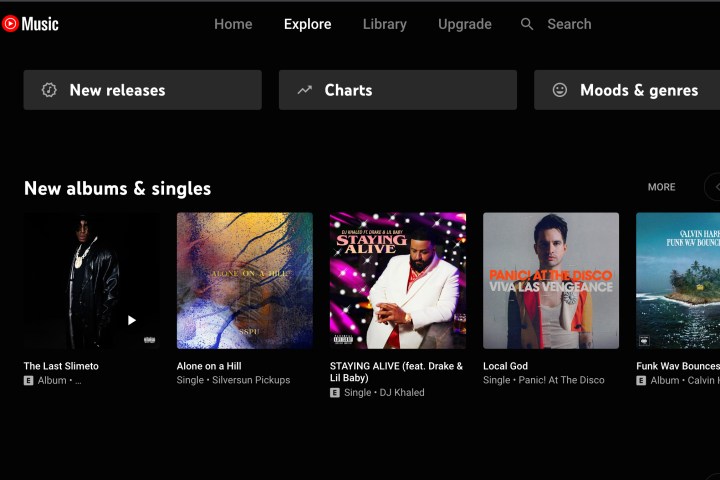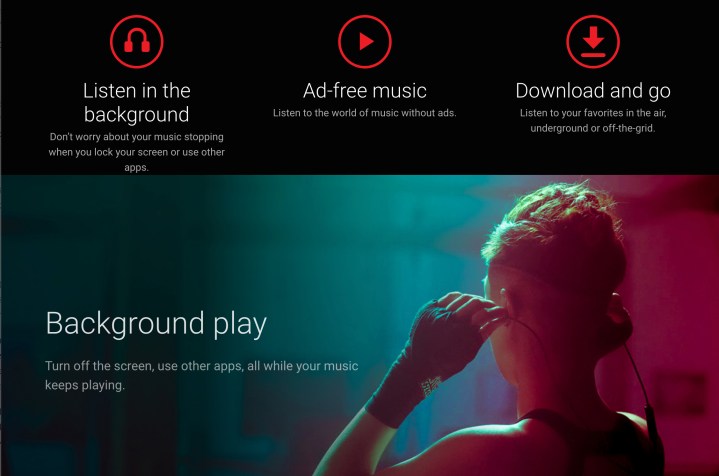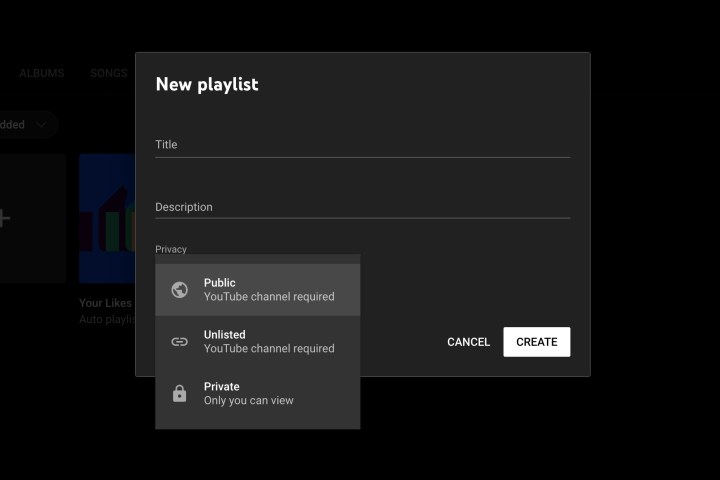Google once had its own dedicated music player called Google Play Music — and if you’ve looked into that streaming option lately, you will see that it’s been shut down. As you may know, people regularly use YouTube itself to play music, search for new songs, and assemble playlists of their favorites. This prompted Google to release a new, upgraded service called YouTube Music, a music-only source for streaming your tunes.
Is YouTube Music a contender along with apps like Spotify, Tidal, or Apple Music? Well, that may depend on how much you use YouTube to look for music and how important music videos are to you. Here’s everything you should know.

The basics
The interface is fast and notably more minimalistic than Google Play Music, getting you to your favorite songs and associated music videos ASAP with simple, direct controls. There are sections for your Home page, Explore to find new albums, Library to see your listening history and favorite artists or playlists, and an Upgrade section if you want to choose a subscription.
All this taps into your Google account information and history, so if you’ve already been using YouTube to listen to music for a while, you’ll find a lot of prompts to add your favorite musicians and build out a profile for recommendations (a step you can skip if you prefer). Left to its own devices,
Music library
As of April 2023,
Audio quality
- Low: This sets the bit rate at 48kbps AAC.
- Normal: This sets the bit rate at 128kbps AAC.
- High: This sets the bit rate at 256kbps AAC.
You can switch between these at any time by heading to the

Costs and tiers
The base tier of
- YouTube Music Premium: Along with a rate increase for YouTube Premium, YouTube Music also saw a price bump in July, 2023. For YouTube Music Premium, fees now start here at $11 per month or $110 for an annual payment. This upgraded service grants access to its entire catalog, allows the app to play when your screen is locked (important for listening on phones), and cuts out the ads. It also enables song downloads for offline listening.
- Family Plan: Starting at $17 per month, this option allows you to add up to five family members over the age of 13 in your household. It can also be used to manage YouTube TV services.
- Student Plan: This discounted plan offers a three-month free trial and starts at $5.50 per month. Students will have to verify their education status each year to keep on using this plan.
Platform compatibility

Features and music discovery
YouTube is, after all, still YouTube: Music videos are integrated into the music player and play automatically if they are available with a song (otherwise, you get album art). The videos will downsize and stay in the corner if you navigate elsewhere in the
You can also choose to create an automatic playlist based on what music videos you’ve liked and listened to in the past, or create a new playlist of your own and add songs — with options to make it public on your YouTube channel or set it as private. There’s also a lot you can do with any individual song that you’re looking at. Select the Dropdown menu to a song, and you’ll see options to play it next, add it to your current queue, add it to a playlist or to your liked songs, learn more about the artist, and more.
Most recently, YouTube add a new “Your music tuner” feature to the service that lets users create their own radio stations made up of music from up to 30 artists that they add. It can be tweaked to your preferences, like if you want it to just include artists you added or if it’s OK to include similar artists, too.
Editors' Recommendations
- YouTube TV looks to lessen live latency with broadcast delay feature
- YouTube TV: plans, pricing, channels, how to cancel, and more
- YouTube TV still leads after latest round of streaming numbers
- What is a network music streamer and why do you need one?
- NFL buffering on YouTube TV? You’re not alone today




